








Follow us on: RCWilliamsCompany.com | 913.912.1083 Available in red for an extra splash of color. ©2022 RC Williams Company, LLC. Designed and manufactured by RC Williams. All rights reserved. DESIGNED FOR YOUR BEST PERFORMANCE Find out more about our innovative products today! THE AMAZING DBL BASS BUGGIE® We’re home of the original double bass transport. THE AMAZING BASS STAND Keep your upright bass secure and a comfortable seat while you’re performing. STUDIO G STAND A versatile option for guitarists in the studio or on the stage. Protection for your instrument and comfort for the performer. THE AMAZING MINI X STAND Unique hinged “x” format for smaller stringed instruments such as violins, violas, mandolins, and most ukuleles. Available in multiple heights and natural finish. 2

3






34 64 58 4
OUR CHOICE
The Bluegrass Standard is a life-long dream of Keith Barnacastle, who grew up in Meridian, Mississippi. For three years, Keith brought the Suits, Boots and Bluegrass Festival to Meridian. Now, with the Bluegrass Standard, Keith’s enthusiasm for the music, and his vision of its future, reaches a nationwide audience every month!


Keith@TheBluegrassStandard.com



28 16 5 CONTENT BOB LUCAS 08 BROKEN COMPASS BLUEGRASS 12 BRYAN SUTTON 16 LONESOME RIVER BAND 28 SHELTON & WILLIAMS 34 EVELYN GLENNIE 40 MANDO & BEER PROJECT 48 TWIN CREEKS STRINGBAND 52 CRAIG DUNCAN 58 PHILLIP STEINMETZ 64 DOLLY PARTON FOOD 68 FAN PHOTOS 73
Keith Barnacastle • Publisher
Our Staff
Richelle Putnam • Executive Editor/Writer


Richelle Putnam is a Mississippi Arts Commission (MAC) Teaching Artist/Roster Artist (Literary), a Mississippi Humanities Speaker, and a 2014 MAC Literary Arts Fellowship recipient. Her non-fiction books include Lauderdale County, Mississippi; a Brief History, Legendary Locals of Meridian, Mississippi and Mississippi and the Great Depression. Richelle@TheBluegrassStandard.com
Rebekah Speer • Creative Director
Rebekah Speer has nearly twenty years in the music industry in Nashville, TN. She creates a unique “look” for every issue of The Bluegrass Standard, and enjoys learning about each artist. In addition to her creative work with The Bluegrass Standard, Rebekah also provides graphic design and technical support to a variety of clients.
Susan Woelkers • Marketing
Susan traveled with a mixed ensemble at Trevecca Nazarene college as PR for the college. From there she moved on to working at Sony Music Nashville for 17 years in several compacities then transitioning on to the Nashville Songwritrers Association International (NSAI) where she was Sponsorship Director. The next step of her musical journey was to open her own business where she secured sponsorships for various events or companies in which the IBMA /World of Bluegrass was one of her clients.

Brent Davis • Contributor

Brent Davis produced documentaries, interview shows, and many other projects during a 40 year career in public media. He’s also the author of the bluegrass novel Raising Kane. Davis lives in Columbus, Ohio.

6
Mississippi Chris Sharp • Reviewer

Singer/Songwriter/Blogger and SilverWolf recording artist, Mississippi

Chris Sharp hails from remote Kemper County, near his hometown of Meridian. An original/founding cast member of the award-winning, long running radio show, The Sucarnochee Revue, as featured on Alabama and Mississippi Public Broadcasting, Chris performs with his daughter, Piper. Chris’s songs have been covered by The Del McCoury Band, The Henhouse Prowlers, and others. https://mississippichrissharp.blog
Susan Marquez • Journalist


Susan Marquez is a freelance writer based in Madison, Mississippi and a Mississippi Arts Commission Roster Artist. After a 20+ year career in advertising and marketing, she began a professional writing career in 2001. Since that time she has written over 2000 articles which have been published in magazines, newspapers, business journals, trade publications.
Kara Martinez Bachman • Journalist

Kara Martinez Bachman is a nonfiction author, book and magazine editor, and freelance writer. A former staff entertainment reporter, columnist and community news editor for the New Orleans Times-Picayune, her music and culture reporting has also appeared on a freelance basis in dozens of regional, national and international publications.
Candace Nelson • Journalist
Candace Nelson is a marketing professional living in Charleston, West Virginia. She is the author of the book “The West Virginia Pepperoni Roll.” In her free time, Nelson travels and blogs about Appalachian food culture at CandaceLately.com. Find her on Twitter at @Candace07 or email CandaceRNelson@gmail.com.
7
BOB LUCAS


8
Brent Davis
Bob Lucas sits in his country house near Zanesfield, Ohio, and plucks a string on his gourd banjo. “I’ve spent half my life tuning...and the other half playing out of tune.”
It’s a typically entertaining comment from the talented multi-instrumentalist and the writer of big songs for Alison Krauss, The Newgrass Revival, and other artists. His online bio describes him as a “glory shouting, sweet singing, banjo picking, guitar thumping, old-time fiddling, songwriting rounder with a desire to share a sense of musical wonder any way he can.”
Now, he’s sharing how he wrote “Momma Cried” on the banjo. Recorded by Alison Krauss and Union Station and sung by Dan Tyminski, Lucas created the song for a play about Frances Slocum, a Quaker girl kidnapped by--and then lived happily with--the Miami people on the American frontier.
Unlike other bluegrass and roots music songwriters, much of Lucas’s catalog consists of songs written for plays and theatrical productions during a long relationship with Mad River Theater, located near his rural home.
There was a moment when Lucas considered taking the more conventional path and moving to Nashville. He called someone who had done just that for advice. But when he explained he already had a salaried position writing songs for the theater, he was advised to stay put. “He said, ‘Don’t move to Nashville. What you got going is what everybody here
wants,’” Lucas recalls. “So that was that. I told my wife we won’t be moving to Nashville because what we got is what we want.”
Unlike other banjo-playing songwriters, Lucas is not Southern but thoroughly Midwestern, having grown up in Holland, Michigan, idolizing his brothers- all singers- and listening to Calvinist hymns.
“It was all very powerful,” Lucas remembers. “Choirs and big organs. And then I grew up with these barber shoppers. My brother Don’s quartet was a barbershop quartet straight up. But they sang very modern arrangements.”
The storytelling Lucas grew up with influenced his songwriting. “My best friends on the planet are guys who like to sit around, have a little bourbon, and tell stories. They collect stories and things that happen to them and think, “Oh, this is gonna be a good one to tell!”
Lucas worked at a YMCA camp when he was a teen. “There was a guy there who could really play the banjo. And I wanted to do that. I wanted to be able to play the banjo and play not necessarily a million notes, but the right ones.”
The songs on Banjo for Lovers, Lucas’s latest banjo-centric album, reflect his musical curiosity. He employs several strumming and picking styles and complex chord progressions not often heard in bluegrass, pairing his effervescent banjo with electric guitar.
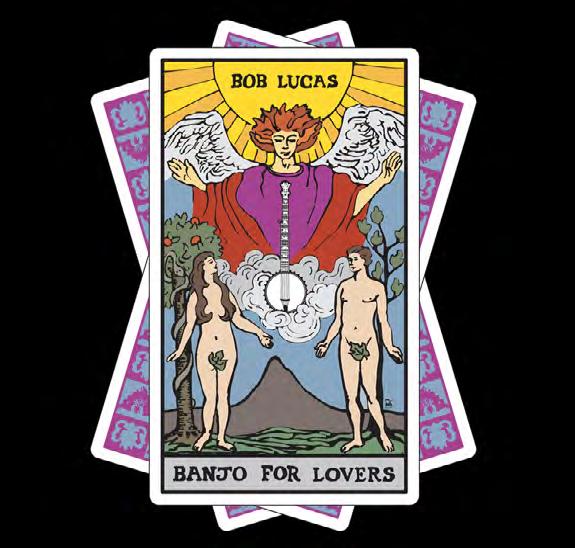

9
As a teenager, Lucas moved to Bloomington, Indiana, to hang out with a brother. He soon taught music lessons, wrote songs, and played in local bands such as The Not Too Bad Bluegrass Band with singer/guitarist Jeff White.
Lucas also recorded an album for an obscure label in Bloomington. Sam Bush and John Cowan of The Newgrass Revival were working in the same studio when the engineer listened to a test pressing of Lucas’s album.
“So, he puts the needle down at various spots, and the first thing that came out was ‘When the Storm is Over.’ I was not there when it happened, but Sam told me later he jerked his head around and said, ‘Who is that?’”

The Newgrass Revival recorded the song, and 50 years later, Lucas figures it’s probably his best-known tune. “It’s still being performed. Bela Fleck did that as an encore across the nation recently with his Bluegrass Heart tour.”

Lucas first knew Alison Krauss when she was a kid from Champaign, Illinois, playing in a band with her brother. Years later, Lucas’s friend and former bandmate Jeff White needed some songs for an audition with Krauss. Lucas played him an original composition, “The Road is a Lover.” Krauss recorded that song and two more tunes: “Daylight” and “Momma Cried.”
“Both of the records my tunes are on went Grammy,” Lucas says. “It was just crazy.” For almost 30 years, Lucas wrote for Mad River Theater Works, which began in 1978, creating plays that explored Ohio history. In 40 years, the company has staged 30 plays on national tours, often presenting them to young people at schools and educational institutions. The plays have explored many social issues in stories focused on historical characters and chapters, including Jackie Robinson, the Underground Railroad, Rosa Parks, the Freedom Riders, Casey Jones, and Frances Slocum.
“When I started having a chance to work for Mad River, they were doing all these shows about race relations,” Lucas recalls. “Anything that had to do with where Europeans and either Indigenous people or African people--where those two cultures came together--was what I wanted to talk about in my writing.”
Lucas not only wrote music for these productions but was often onstage, portraying characters and singing the songs he had written for them.
“I really like the music from Freedom Riders. I’m not blowing my own horn, but there are a lot of very strong songs. And my catalog is full of songs about these characters
10
that I really don’t have firsthand knowledge of, but I felt things that they really needed to say to clarify their position.”
Lucas continues to write and perform. In “So” on Banjo for Lovers, the singer looks at his life and declares, “I’ve sopped up the gravy and tasted the wine.”


Lucas admits that album is autobiographical. “Here’s the way it is with me. I don’t have a big pension. I have lived my pension. I’ve done what I could with my life and my time. I’ve trekked through the world high and low, and I have sopped up the gravy and tasted the wine, and I’ve loved it. So, I got no regrets.”

11
Broken Compass
In today’s popular music, the “biggest” acts are usually more “plugged in.” With mass appeal genres such as pop and hip-hop, electronic music is the thing du jour. Songwriting is often done by a “team” of many, instead by one or two genuine writers who live and breathe the music.
That’s all just fine for Top 40 pop but not so fine for young people who appreciate the nuance of traditional forms, acoustic instruments, and the old-fashioned and heartfelt ways of composing and performing live music.
As a younger group, Broken Compass Bluegrass has an answer to the questions associated with selecting bluegrass as their genre of choice. While bluegrass has grown to encompass more diversity – namely, the “progressive” side of the genre – more and more younger people are showing interest
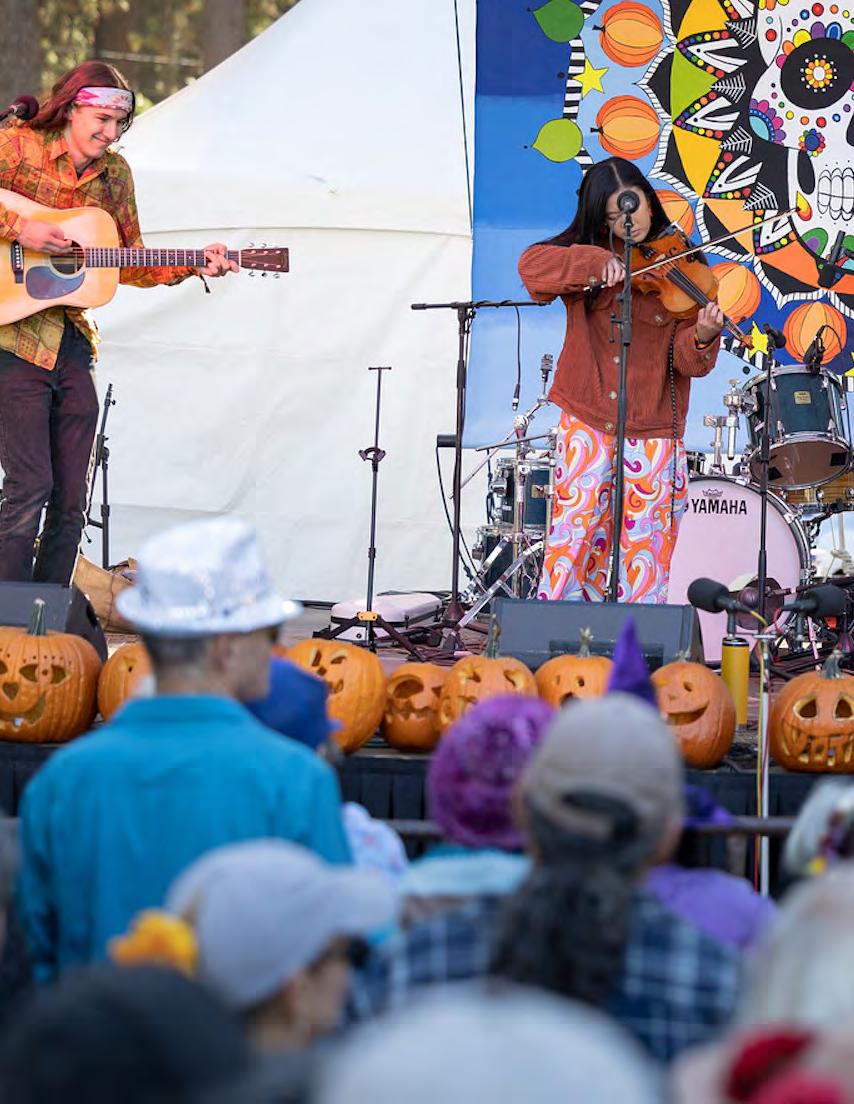
12
Kara Martinez Bachman
Compass Bluegrass
in presenting the tried-and-true to listeners.
Broken Compass Bluegrass multi-instrumentalist Kyle Ledson has been making music since he was three years old; although he is still a pretty young guy, his performance career is already long. He can speak to the growing trend toward more stripped-down and organic roots music styles.
“Our fans so far tend to be from the older generations,” Ledson explained. “We see a big pool of these familiar faces at our shows, and we’re growing amazing relationships with them. When attending bluegrass festivals, however, we see fans of all ages. And we were once those youngsters ourselves, running around with half-sized fiddles in our hands.”

13
“Lately,” he continued, “we are starting to see peers our age attending our gigs, which is really rewarding. We’d really love to reach the ears of our age group.”
In the end, he said, it’s not about who they are playing to but that there are people of any type who enjoy listening as much as the band enjoys playing.
“Ultimately, we’re grateful to have fans of any age at our shows,” he said. “We want to play for fans that love our art, and age is not a factor.”
“I do believe there is a resurgence of bluegrass – or jamgrass, if you will – with the fierce rise in popularity of bands like Billy Strings where again, all ages are welcomed,” he added.
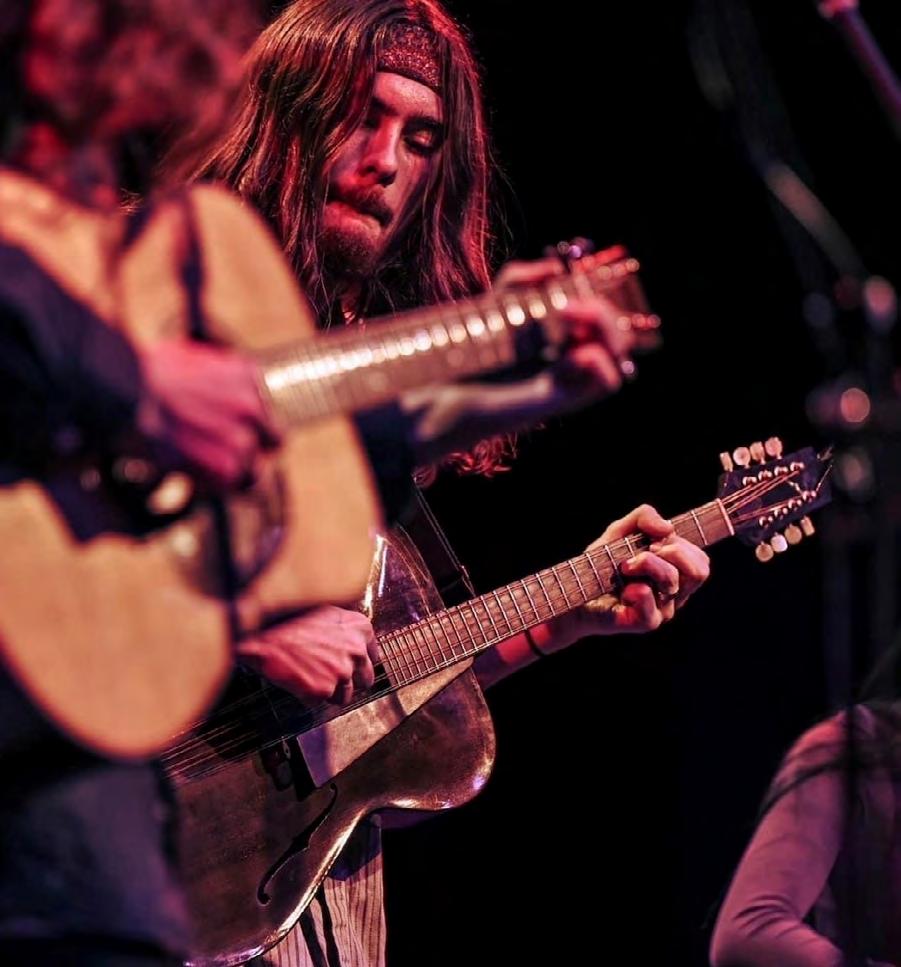
It sounds like Ledson and the band will be busy this fall.
“Our cups are overflowing with music, and it’s a great thing,” he explained. “Our vinyl production of ‘Fool’s Gold,’ our debut album, is expected to be complete in late August, which is very exciting. We also should have our first live album completed by then…fingers crossed.”

He said they have already started work on a second studio album and are looking forward to three big events happening in August and September: The Big BLUEgrass festival in Tahoma, Calif.; Camp Deep End in Navarro, Calif.; and the IBMA in Raleigh, North Carolina.
“In between all that, our weekends are filled with local gigs,” he said.
The band began as a trio formed during the pandemic shutdown, consisting of Ledson and multi-instrumentalists Django Ruckrich and Mei Lin Heirendt. The three musicians all grew up attending the California Bluegrass Association’s Father’s Day Bluegrass Festival, participating in their Kids on Bluegrass program.
“From that, Django and I did some duo work when we were
younger. School and sports parted our ways until the pandemic brought us back together for a virtual set online for the CBA,” Ledson explained. “I had been playing solo for a while, building local connections with venues, promoters, and touring bands, so we originally called ourselves Kyle Ledson & Friends. We had a lot of fun together and quickly realized we shared this similar passion, so we decided to book a few gigs.”
Ledson said it didn’t take long to realize they were “onto something” good…they decided to change the band’s name to Broken Compass Bluegrass and bring on a fourth member, bass player Sam Jacobs.
“We were lucky to find Sam, who was attending Chico State’s Recording Arts program with me,”
14
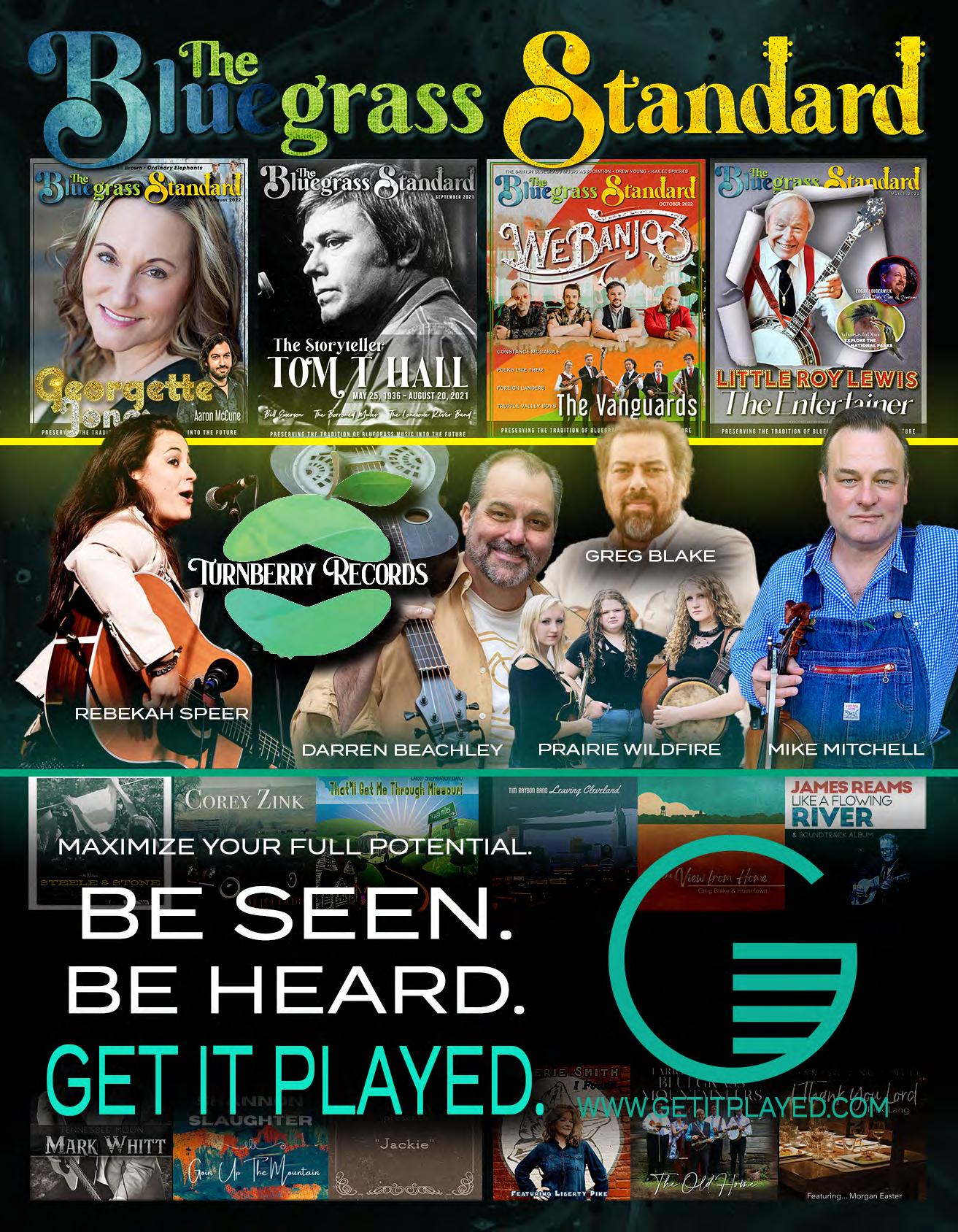
15

16
Ledson said.
Ledson said where his family lives – and how they live – contributed to his interest in more traditional styles of music. He and his bandmates all hail from the Grass Valley/Nevada City area in California.


“I grew up just outside the area in a town called Camptonville,” he explained. “We lived off the grid, as my family has been building a log cabin on our property. Growing up off-grid on rural property completely drove my musical development. I didn’t have TV or video games distracting me. Instead, I put all that time into my strings, and it really paid off. We also had the time to attend lots of music festivals, which drove the inspiration.”
“Looking back, I’m grateful for all that and wouldn’t change a thing if I could,” Ledson added.
17
Bryan Sutton

18
Martinez Bachman
Kara
Garth Brooks. Taylor Swift. Blake Shelton. Carrie Underwood. Eric Church. Bryan Sutton has played for them all. A Grammy Award-winning guitarist and nine-time IBMA Award “Guitarist of the Year” recipient, Sutton has genuinely earned his role as one of the most sought-after session guitarists in the business.
He garnered notice for his playing style in the 1990s when he was brought on as one of the guitarists for Ricky Skaggs and Kentucky Thunder. He also found time over the years to fit in work as a record producer, music educator, and more.
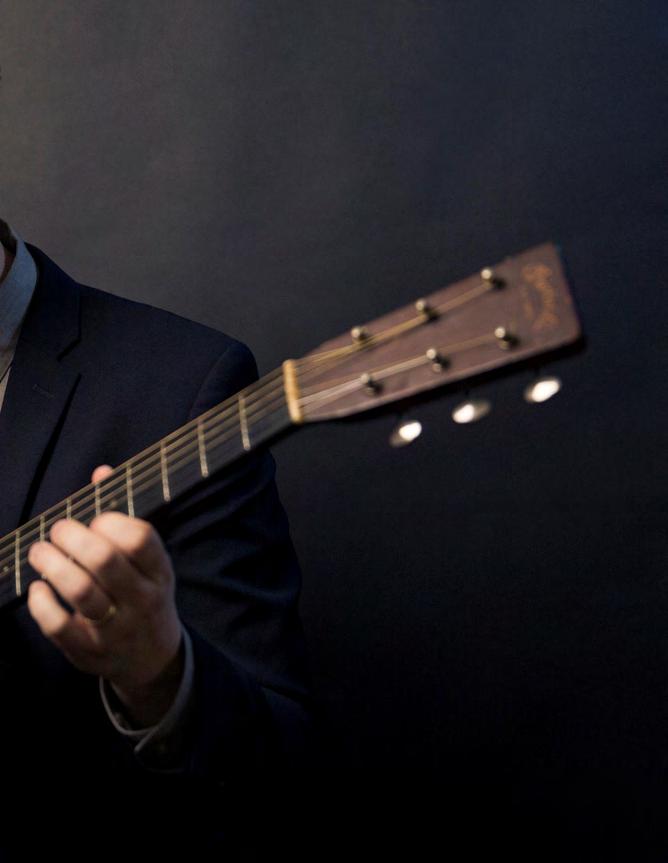
The roster of well-known names Sutton has played with – or played for – is long. When asked which recordings were most meaningful to him, it must have been difficult to pin it down. How do you rank your projects when you’ve worked year after year with some of the very best names in music?
“I’ve been fortunate for years
now, having recorded with folks from all over the musical place,” he said. “I’m working today, as a matter of fact, continuing a project for banjo player Wes Corbett. We’ve got Brittany Haas and Paul Kowert also in the band. It’s so good!”
“I’m also proud of the record that Andy Hall has released,” Sutton said. “He’s not just a great player but has written some really strong tunes.”
“It’s not out at this point, and I’m not sure when it will be, but I produced some tracks for Dolly Parton last year,” he said. “That was fun to do.”
“I’m very proud of the work I do as more of a Nashville session guitarist,” he continued. “It’s not bluegrass per se, but I really enjoy being able to do that work with some of the finest producers, writers, and musicians in the world.”
19

20

21

Additional stuff he’s done recently is the new Morgan Wallen record, which he called “a blast” to make; a project set for release from the country-pop duo Dan and Shay; and “some really wonderful country music from Hailey Whitters.”
Outside of his work as a performer, Sutton is edified by all types of music.

“If I need to really zone out and just listen and be inspired, I will often put on some solo classical piano,” he said. “I’m a fan of Beethoven, Schumann, Bach and Mozart. It’s just strong music.”
“As a complete alternative, I am indeed a fan of heavier rock music,” he said. “There are some interesting parallels in the energy in that music and some of the places we go in bluegrass. I’m a fan of a band called Car Bomb. They take the idea of a predictable rhythm and throw it out the window. It’s fun to listen to.”
Sutton said both his family and community of origin were oriented towards music.
“We played all the time, and I literally don’t have a time where going out and jamming…playing with friends…was a negative thing. I’ve always loved playing,” he reminisced.
“I remember when more live music was regularly on TV, seeing the Nashville Network and shows like the American Music Shop,” he said. “On MTV, there were more of these Live Aid-type events, and I would see the lead singer surrounded by great musicians. I remember feeling that I would want to be in those bands. I’d also see folks like Jerry Douglas on my favorite bluegrass records – but also on TV, playing with popular country singers – and feeling that there might be a place for me in that world.”

24

25
He was right; there was a place for what he brought to the table. A big place, where his first thoughts of becoming a musician were realized in a way that might seem like a dream to many aspiring musicians.

He has some pretty good advice for those young people just starting, hoping to “make it” in Nashville. He said he recalls always having wide-ranging interests in different areas of music and thinks it’s an asset.
“I didn’t do just one thing or play one instrument,” he recalled. “I’ve always just wanted to play the best music with the best people. I’ve jumped genres and played several instruments. I think that diversification has helped me. I think the theme there for an aspiring musician is to be adaptable. Don’t come to a place like Nashville and think you’ll immediately find a place for exactly the thing you do. It can happen, but it’s rare.”
“Come with a good attitude,” he further advised, “and work to notice where you might fit.” He said if learning something new will help a budding performer snag a gig, they should learn it.
While not engaged with his studio sessions, Sutton said he enjoys adding more
26
teaching into the current mix.
“I’m in my 12th year with ArtistWorks,” he said. “The last couple of years have had me out with Béla Fleck as part of his Bluegrass Heart project. That’s been so great. We’re not as active this year into next, but will still be out here and there.”

He said the ArtistWorks online learning allows students to interact with Sutton via a “video exchange” process.
“They submit a video to me, and I film a response,” he said of this unique way of learning. “The whole community then gets to view the content. It’s like a 24/7 virtual masterclass. I think the masterclass format is the best for group teaching, and this program nails that in the 21st century.”
Just imagine having access to a teacher as accomplished as Bryan Sutton. That’s indeed some pretty sweet learnin’, where the virtual schoolhouse must certainly rock.
27
The Lonesome River
Since 1982, the Lonesome River Band has entertained audiences with original tunes. Under ground while maintaining its trademark sound. “We do a lot of our own material – songs that staying in the business for so long, but we love it, and our fans seem to love what we are doing.”

Sammy serves as the band leader, booking manager, road manager, bus driver, and even bus together.” When Ronnie left in 2001, Sammy took ownership of the band. “It takes a lot of not be the best banjo player, but I’m good at driving a bus.”
Actually, Sammy is a fine banjo player. He played with the Virginia Squires for six years before Music Hall of Fame, awarded the IBMA Banjo Player of the Year five times, and received the himself presented the award on The Late Show with David Letterman. Following the presentation, Martin.
28
The River Band
Under Sammy Shelor’s direction, the band has stayed relevant for decades, breaking new that have never been done before,” says Sammy. “Some may think we’re just stupid for doing.”
bus mechanic and came on board with Ronnie Bowman. “Ronnie and I kept the band work to run a band,” Sammy says. “Probably way more than people might imagine. I may
before joining the Little River Band. He was voted in as a member of the Virginia Country the Steve Martin Prize for excellence in bluegrass and banjo in November 2011. Martin presentation, the Lonesome River Band performed as the show’s musical guest, joined by Steve

29
Susan Marquez
Banjo players around the world look to Sammy’s banjo expertise. Serious pickers study Sammy’s tab books and watch his instructional DVD from AcuTab.
The band has released 23 albums since Sammy joined the band in 1990. “They had released four albums prior to me coming on board.” To stay current, Sammy says that the band works to release a new album every twelve to eighteen months. “We had an album come out in January of this year, and we are working on songs for our next album, which we will record next January or February.”
When the Bluegrass Unlimited chart came out in 1991, the Lonesome River Band had the first bluegrass album at number one. Carrying the Tradition, released on the Rebel Records label, stayed on the chart for six months.
The band is based in Floyd, Virginia, close to where he was raised, in Meadows of Dan, Virginia. Covid was a challenging time for the band. “We went from 80 to 85 dates a year to nothing overnight,” he says. “We are now up to 70 dates this year. So, we are not quite back up to 100 percent, but we are hoping we’ll be at full speed next year. That schedule works great for us. It keeps us on the road a lot, but we are still home half of the year.” Sammy says that Sirius XM helped them a lot during Covid. “They made sure bands that toured for a living were played in rotation. We are grateful for that.” One thing that helped pay the bills during that time for Sammy

30

31 Brent Da vis
was selling his prized banjo. “I hated to do it, but it helped me to be debt free.” Sammy’s driving banjo style helps keep the Lonesome River Band consistent. “We have had a few band changes here and there, but honestly, I think right now we have the most talented people who have ever worked in the band. It’s fun to go on stage with them.”

The touring and playing never get old for Sammy. “We love meeting new folks and visiting with old friends. It’s a way of life that we all enjoy. We are fortunate to have great fans. We honestly feel blessed every day to have the opportunity to do what we do.”


32
7 VENUES · SISTERS, OR



JOHN CRAIGIE · DONNA THE BUFFALO · STEVE POLTZ
THE WAY DOWN WANDERERS · THE SLOCAN RAMBLERS · DAMN TALL BUILDINGS
HANDMADE MOMENTS · HUMBIRD · CHATHAM RABBITS · TWO RUNNER AND MANY MORE!
SEPT 29 -
OCT 1, 2023
TICKETS ON SALE NOW AT SISTERSFOLKFEST.ORG 33
Shelton &

34

35
&
Susan Marquez
Williams
Don’t try to pin Shelton and Williams, based in Danville, Virginia, down to any one musical genre. While rooted in bluegrass, you might hear them veer off to something traditional, contemporary, old-time or something else altogether. “We love it all,” says Johnny Williams. “We may start off with a bluegrass tune and follow it up with Pat Benatar.”
Their love for all genres of music comes naturally. Jeanette Williams was the youngest of eight children on a tobacco farm. “My brother, who was eight years older than me, was involved in musical theatre. He always had the lead role in school plays, and we all went to see him. Another brother, two years older than me, was in a southern rock band in high school, so I was influenced by that as well. At church, I heard Gospel music and learned to sing harmony. And we always had a radio playing while we worked at the tobacco barn.” When she met Johnny Williams around 1988, she was exposed to bluegrass music.
“I grew up in a mountain town in Virginia,” says Johnny Williams. “No one in the family played instruments, but my parents and my granddaddy sang in church.” Johnny says he was a “late bloomer,” getting into music in high school.
“I was the lead singer in a Motown band. My neighbor taught me three chords of a Johnny Cash song, and I learned to sing and play with his band.” Johnny started listening to Hank William’s greatest hits album and an album by Flatt and Scruggs and the Osborne Brothers. “I also listened to the radio and eight

tracks. I was hooked.” When the band fizzled out, Johnny stopped playing until he was 36 or 37 years old. “I took up music again, and my major influences include Ralph Stanley, Doyle Lawson and Tony Rice.”
Johnny and Jeanette met at the Mock Grand Ol’ Opry show, where Jeanette was Emmylou Harris and Patsy Cline, and Johnny was Hank Williams and Bill Monroe. “I joined his band after we met there,” says Jeanette.

As a child, Jay Shelton was the only one of the three exposed to bluegrass and old-time. “I got a good dose of Gospel bluegrass at the Hawker family reunions,” he says. “There would be three generations of family playing and singing, and that had a big influence on me. It got the fire burning in me to play music.” In the late 1960s and early 1970s, Jay says he always had country music on the radio and stereo. “I even explored rock and roll in the 1980s. I think that helped me develop my musicianship and made it possible for me to play all styles. I got into all of it.” The turning point for Jay was when he discovered Tony Rice. “Everything was over then. I was enamored with his music. I even had a chance to meet him when I was a young musician through my friend Bobby Hicks. I was a fiddle student of Bobby’s for a while.” Jay also sang in church and spent time as a singer-songwriter performing solo.
Jay knew Jeanette and Johnny, but not well. “In 2016, they were playing some local shows, and I took my wife. I told her it was a great
36


37
opportunity to see them perform.” Johnny recognized Jay from the stage and invited him to join them on guitar and vocals. “That worked out pretty well, and in 2019 Jay asked Johnny to produce a solo project for him. “Jeanette joined on vocals and bass. We didn’t know it at the time, but we lived five miles apart. We had been hiring other musicians from two and three hours away when Jay was right down the road from us.”

Now known as the Shelton and Williams, Johnny says the band plays all kinds of music. “Whatever a venue wants, we can do, from straight traditional to rock and roll. We pay attention to what the audience is responding to, and we adjust our set from there. We really play to the audience’s desires.” They make it work as a trio, but they will bring in banjo, fiddle, etc., when they play bigger shows and recording. “It’s fun knowing we have the freedom to play what we want. When a band does the same twelve to fifteen songs night after night, it’s hard to keep up the excitement and energy for the audience.”
For the So Much Time, So Much Love album released last July, Jeanette says they focused on the folk market. “The Crosby, Stills and Nash tune ‘Wasted on the Way’ features all three of us. Then we each brought three additional songs that we felt passionate about recording.” Two of the songs on the album are originals, written by Johnny. “Right now, we are gathering pieces and thinking about directions for our next project. We are bringing in whatever songs speak to us.”
Jay says that while the band doesn’t rehearse regularly, they will try out songs with each other occasionally. “We mesh well, and we complement each other.”
Each member of the band is accomplished. Jeanette has over 32 years of performing experience and many awards. She has more than seventeen SPBGMA nominations, with three wins for female vocalist of the year. She has won two IBMA awards and two songwriting awards.
Johnny was named Virginia State Champion male vocalist, PCABO male vocalist two times, and PICABO songwriter of the year. He has won the Chris Austin Songwriting Contest at MerleFest twice and has been a finalist for songwriter and male vocalist of the year at SPBGMA.
Jay was active on the bluegrass scene in the 1970s and 80s as a lead singer and guitarist before changing directions and being the frontman for a rock band for many years. He then became a singer-songwriter doing solo shows until he returned to Bluegrass in 2019. Jay is an accomplished lead guitarist, songwriter, and vocalist. His first project, Home (which included Johnny and Jeanette), was released in 2019.
Jay’s wife, Beverly, coordinates a fundraiser each year, and Shelton and Williams is the featured act. The sixth annual Bluegrass by the River Concert will be Saturday, September 16, at the outdoor amphitheater at 2 Witches Winery and Brewing Company in Danville, the birthplace of Tony Rice. Proceeds go to Project Lifesaver, a non-profit organization that provides wristbands to quickly locate individuals with cognitive disorders who are prone to the life-threatening behavior of wandering. A portion of the proceeds will also be donated to Pam Rice, widow of legend Tony Rice.
38



39
Evelyn Glennie

Evelyn Glennie’s world of sound began like most of ours—where we grew up, whether in urban or rural areas. While the city environment may have immersed you in the clamor of passing automobiles and overhead airplanes and the joy of laughter and squeals of neighborhood children, the rural setting, like Evelyn’s family farm, most likely produced an orchestra of sounds through livestock and machinery and the tasks that busied your hands, feet, concentration, and imagination.
“Growing up on a farm and being around livestock, you have to be aware of the surroundings and be responsible for that,” said Glennie. “You also learn about patience because you can’t force nature. One thing prevalent throughout my career is knowing that things don’t happen in five minutes.” She speaks of patience, completing the given tasks, and seeing them through “from the beginning to the end,” organizing your time and developing that time frame over months and years. “So, I think that it was an incredibly healthy upbringing. There’s no doubt about that. But I certainly appreciated that more in my later years than obviously just being on the farm as a kid.”
Throughout our lives, we grow through discovery, making the freedom to discover pertinent to learning and progressing knowledge. Glennie’s introduction to the drum involved “freedom of discovery,” thanks to her teacher, who told her to take the drum home for seven days to discover it, from its construction to the sounds it produced. Therefore, her first experience with the drum was not through rigid posture and positioning but through striking the drumhead and the sides of the drum in various ways and receiving the vibrations through her body. This changed how Glennie thought about dynamics because she connected with the resonance, not just the impact, and this allowed her to go to the extremes of dynamics and deal with time differently because she connected what she was feeling to her natural body state.
“I think it just allowed me the realization and the permission to believe that I was part of that sound, that it belonged to me,” said Glennie. “It wasn’t just something you could copy from somebody else. It was a sound you could experience even on a recording, belonging to that moment.”
In some instances, you are the instigator of the sound, and in others, you may be the listener, Glennie explained. “They are two completely different things. If you’re talking from an audience point of view, you’ll never have that close relationship with the vibration as the player will. What the player can do is acknowledge the resonance and suspend that resonance in a physical motion or simply that motion of listening, paying attention to the
40 Richelle Putnam

41
© Philip Rathmer (and Brigitte)photo ref Drum Kit 0363 Philip Rathmer (and Brigitte)photo ref Drum Kit 0363
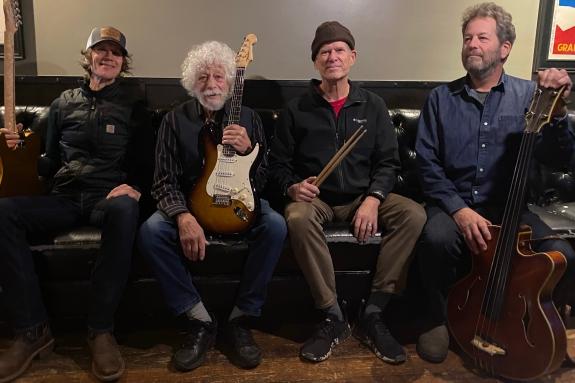










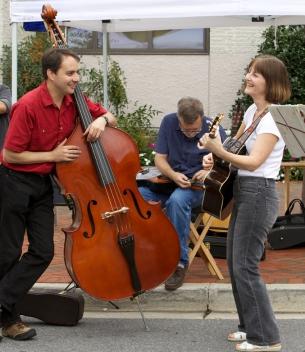



Saturday, September 2 Sunday, September 3 Come enjoy the free Open Mic Night on Friday, September 1 Live Gospel Service Sunday Morning BANANA AND THE BUNCH feat. Lowell Levinger of the Youngbloods SALTY SALLY DIRTY CELLO Wildcat Mountain Ramblers ets are only $50 for the whole weekend Cheap Tent and RV Camping too! LABOR DAY WEEKEND 2023 IN QUINCY, CA SQUARE DANCING IN THE MOUNTAINS Scan to buy tickets Tickets $50 Michael Haworth Lake Elsinore, California Dancing Friday evening, all day Saturday and Sunday morning Barbecue dinner included in package price Enjoy featured musical groups Pre-rounds Saturday evening, and rounds between tips Plus dancing focused on newly-graduated Plus dancers Sierra Sweethearts Front Porch Dust in My Coffee Silver City Sage Creek Ten Dollar Pony Lawrence Johnstone Sept. 1 & 3, 2023 Quincy, California Ukiah, California tickPurchaseyour ets&camping onlineat www.plumasamericana.com 42
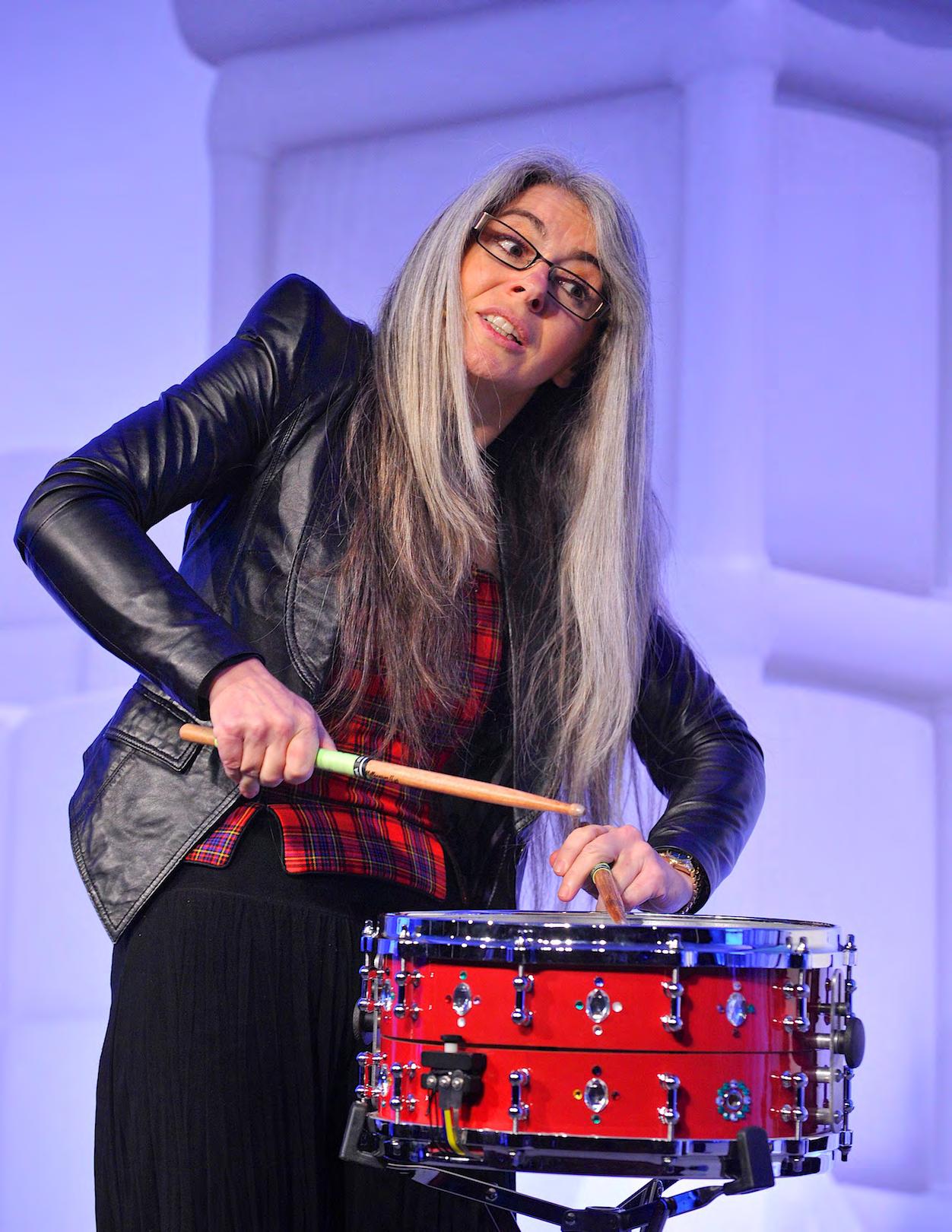
© Tom Howard PromaxBDAphoto ref Conference Drumming 191 43
space that they’re in. The audience will grasp the body language and what to feel from that sound.” She adds that everybody is present at that moment, “which makes live performances also difficult to record. In my case, I don’t see there being any techniques or systems because we are dealing with a moving thing,” a vibration, if you will, changing from “space to space, from person to person, from moment to moment, instrument to instrument, and piece to piece.”
In 2017, Evelyn became a Companion of Honor, an exceptional award granted personally by Queen Elizabeth II to a select few. Glennie said this of the late Queen of the United Kingdom and Commonwealth:
“She was quite a small lady in height wise but a very private lady, utterly charming, and incredibly professional. Of course, the Monarch is never allowed to express their opinions, so she was neutral on everything. She continued her duties until the day before she passed away and was very devoted to the country, and you really felt that. I felt very privileged to have had the chance to have met her on several occasions.”
Glennie said you could line up different bass drums; even if they are the same size and make, they will still differ. But you must pay attention and listen for those differences, which is challenging. “Listening is very tiring,” she said, because you’re finding the balance between what you hear and what you’re listening to. “Hearing is something you can react to immediately, if registered, but listening isn’t always about sound. Listening is about bringing the other senses into play and connecting all of them. You can be with someone who has no speech, yet you are listening to each other. That is what’s so fascinating about listening. It belongs to all of us and can be accessed by all of us,” whether deep or shallow listening in short or lengthy periods. “If you compare the listening to the occasion of a baby just being born, the listening is incredibly heightened. If you listen to a dying person over a period, the whole pace of your listening changes and that, I think, is interesting. Your listening has its extension and its release.”
Glennie often performs barefoot but stipulates that she doesn’t do it all the time “because of the different environments and the type of floor, as in stone or tile, that can get very chilly.” It’s more about balance,” she said, more about realizing what sound is and “the feet are incredibly sensitive. They really kind of act as your resonator but also your balancer.” She detailed how you negotiate weight and, “in this case, the weight is the sound. You are balancing all of that through your feet,” which provides the grounding for the rest of the body to “maneuver like a bit of bamboo.” She expounds on the nature of the instruments she

44
plays by the frequency from very low to very high and how the attacks are varied.
“The fortissimo on a triangle is very different from the fortissimo on a bass drum. So, with percussion playing, the body’s being attacked in different ways than when you’re playing the violin because you know that most of the sound is on this side of the body. You know the position of the arms and the hands, but ultimately, you’ve got this thing stuck to your body, so the feet are crucial to try to act as that stabilizer.”
Glennie, a Polar Music Prize, Sonning Music Prize and three-time GRAMMY recipient, who has received 28 honorary doctorates from various United Kingdom universities, clarifies the difference between good performance and honest performance, which is doing the very best you can and playing “literally how you are at that moment and time.” It’s about letting yourself be yourself in that performance and saying this is how I want to interpret the piece at this moment. She said everybody has different opinions about what you do, and that’s life. “There will always be bits and pieces to attend to that need developing, and it can be something as simple as not judging the interpretation right in a particular section.” It doesn’t have to be about wrong notes but feeling that you didn’t perform in the way you wanted to. “I think your relationship becomes more detached when you’re trying to strive

45 ©
-
Kit 0363
Philip Rathmer (and Brigitte)
-
photo ref Drum Kit
0363
Philip Rathmer (and Brigitte)
photo ref Drum
for a good performance. An honest performance is about your relationship with the piece of music and the occasion you find yourself in at that moment.”
Founded earlier this year, The Evelyn Glennie Foundation’s mission is to Teach the World to Listen in many ways and in many landscapes. One project of the foundation is The Sounds of Science, being rolled out in schools in Birmingham, England. “Students are dealing with 10,000 years of man-developed sounds, so they’re exploring many subjects including geography, history, science, technology, music sound creation,” and how humans have changed the world – from the first stone tools to the discovery of Newton’s laws of motion and gravity, the nuclear age and beyond. The project is a collaboration with composer Jill

46
Jarman and world history author Christopher Lloyd.
However, the core of the foundation is about listening in different ways.
“We are looking at the musical landscape, the business landscape, social, religion, you name it landscape, right across the board,” said Glennie. “To be clear, it is not a music Foundation. It is literally a foundation about listening.”

47
© Philip Rathmer (and Brigitte)photo ref Drum Kit 0363 Philip Rathmer (and Brigitte)photo ref Drum Kit 0363

48
Every week, over 10,000 listeners tune in for the latest episode of their favorite podcast. Some are mandolin players. Some are beer drinkers. Most of them are music lovers. The popularity has amazed the podcast creator, who knew about both mandolins and beer, but had to educate himself about journalism and editing. Evidently, he learned well because the Mandolins and Beer podcast is a hit.
Daniel Patrick, a native of Michigan, played drums as a kid. “I had a few gigs here and there.” When he bought a Nickel Creek CD because he liked the album cover, a switch was flipped for Daniel. “I heard the first song, ‘The Smoothie Song’ and it blew my mind. I called a buddy of mine who worked at a music store and asked him if they had a mandolin, and the hold music was New Grass Revival.”
He took up the mandolin and practiced, mastering the instrument. Daniel posted a “lick of the day” on Instagram and gained one thousand followers over time. “I was also doing YouTube videos talking about beer. I love beer. I like trying different beers, and for a while, it seemed that craft breweries were popping up all the time in Charleston, South Carolina, where I live now.” Daniel says that stores also carried many craft beers from other states, and he enjoyed trying new ones.
Without really understanding the dynamics of podcasts, Daniel started his in August 2019. “My Instagram name was mandolinsandbeer, so that’s what I called the podcast. I felt that if a hundred people were listening each month, I would be happy.”
But to his great surprise, hundreds, then thousands, of people found and listened to the weekly podcast. He became serious about it, focusing on the music more than the beer. “Now I wrap up each show by asking my guest what their favorite beer is, and if they don’t drink, I ask what their favorite fiddle tune is to play on the mandolin.”
Daniel had a lot of spare time as a full-time mandolin player after becoming a full-time musician. “I thought about interviewing people I enjoyed listening to.” That idea came to fruition when he received an email from Mike Marshall, who found the podcast on mandolincafe.com. “Scott Tischner is great about putting each new episode on his home page each week,” says Daniel. “Mike Marshall said he would love to do an interview on the podcast.”
That interview gave the show even more credibility and helped open doors for Daniel with other artists. While Daniel was an accomplished mandolin player with a good knowledge of beer, he readily admits he was not a journalist. “I had no idea what I was doing. I recorded the interviews as a phone call, like a conversation between two people. I’m sure it was awful. I can’t go back and listen to those first few shows, but then again, I never expected the podcast to have the popularity it does.”
Kara Martinez Bachman
49
Daniel said some very kind listeners with journalism backgrounds began emailing him with constructive criticism. “I welcome that kind of criticism,” he says. “I paid attention to what they were telling me, and that’s how I learned. I think it all comes down to editing. If someone is tuning in to hear Sam Bush, they don’t want to hear my stories; they want to hear Sam Bush’s. So while we may talk back and forth, I edit out a lot of what I said to make the show more concise.”

Editing is essential for the timing of the show as well. While podcasts aren’t held to a specific time restraint, Daniel observes that people begin to lose interest and drop off if it is over 70 minutes. “I try to edit to around sixty minutes.” If the guest has more experience, Daniel will sometimes divide the episodes in half, creating two shorter episodes from one interview.
While most of the guests on his show are mandolin players, Daniel will deviate from interviewing only mandolin players from time to time. “I interviewed Brittany Hass, a fiddle player who has recently joined the Punch Brothers. I also interviewed guitarist Chris Eldridge. I try to find common ground. As long as a mandolin player can get something from it, then it works.”
When asked who his “dream interview” would be, Daniel said, without hesitation, Chris Thile.

“If it weren’t for me buying that Nickel Creek CD and hearing Chris Thile play, I wouldn’t be here today. It was pure luck that I bought that CD, and it changed my life.”
Hear all of the nearly 200 episodes of Mandolins and Beer at www.mandolinsandbeer.com.
50

51
Twin Creeks Stringband
Twin Creeks Stringband finds its origin in Franklin County, Virginia, where its predecessor – Dry Hill Draggers – brought hard-driving old-time dance band music to shows and dances for 35 years.

About five or six years ago, after losing the band’s banjo player for medical reasons, three members of the long-standing outfit soldiered on, grabbing up a fresh banjo player and re-forming as Twin Creeks.
Today, the full lineup includes that new banjo player, Jared Boyd; Chris Prillaman, founder and owner of Twin Creeks Distillery in Rocky Mount, Virginia; Jason Hambrick; and Stacy Boyd. Some current members have relatives who were once part of Dry Hill Draggers, so the band has a legacy filled with family ties.
The culture and landscape of Virginia
influenced the band’s music, for sure.
“Being based in southwest Virginia – where all of our band members were born and raised – has led to a few things becoming tied in with our style of music,” Jared Boyd explained. “The first is the tradition of flat footing and square dancing, where the favorite type of bands to play for these dancers are those with a strong, solid rhythm.”
“Like the Draggers before them,” he continued, “Twin Creeks Stringband puts the focus primarily on the driving rhythm and leaves out unnecessary extra notes or fancy licks.”
He said another undeniable influence is the mountain landscape of home.
“The rural, mountainous area where the

52
Kara Martinez Bachman


53
band is located also serves to explain how our style of old-time is unique and can’t be found even in just the next county or two over.”
Boyd said, “believe it or not,” he took “a little time to warm to the banjo.”
“My parents made me start taking clawhammer banjo lessons in middle school, and it wasn’t until a few years later that I got to where I actually enjoyed playing. I had started a youth old-time and bluegrass band with some friends, and we played gigs together for a few years. At that point, I

enjoyed playing with that band, but I still wouldn’t say I was absolutely in love with the banjo.”
It wasn’t until a few years after – following participation in competitions at fiddler’s conventions, including the notable Galaz convention – that he “realized there was so much I was missing out on in my playing compared to what everyone else was doing.”
He taught himself “missing licks or techniques to better compete against the best banjo players in the area.”
54
That process of learning and improving –that challenge to become top-notch – led him to “discover a ton of different clawhammer players of the past and present” and realize how unique each of their playing styles were. “It was at that point that I realized how much the banjo meant to me,” he explained, “and how much I wanted it to be a part of my life.”
His decision has paid off. In addition to the whole band winning first place in the 2022 Galax old-time band competition, Boyd also placed first as an individual for oldtime banjo and won the “Best All-Around Performer.”
Twin Creeks Stringband released its first album – “Lee Highway Blues,” – in the spring of 2020, and its sophomore release – “Up Jumped Trouble” – followed last fall.
Boyd said all band members have “day jobs” and don’t perform every weekend. This summer, however, various members will participate in several of the fiddler’s conventions in the southwest Virginia region, and they’ll return to Galax again in August for a “full week of fun and jamming.” They’ll also make a few appearances at the beloved Floyd County Store during late

55
summer and fall.
Boyd said one of the reasons he loves old-time music so much is because it is a group effort.
“Everyone in the band is always playing together equally, compared to when bluegrass musicians take breaks, and the rest of the band is mostly just providing backup to whoever is taking the break,” he said. “This also ties back to the fact that old-time music, especially in southwest Virginia, is primarily for dancers. It’s not so much of a performance art as it is a community event.”
He explained that bluegrass is an evolution from old-time, a precursor genre all about dancing and having a good time.

“Of course, neither of those things are mutually exclusive,” he said. “Plenty of good old-time bands can put on a great show, and plenty of bluegrass bands have a solid, consistent rhythm that is friendly to dancers as well.”
“Old-time music primarily focuses on the overall energy that music creates, and any showiness or showmanship can be added on afterward if they so choose,” he added.
56

57
Craig Duncan

58 Kara Martinez Bachman

59
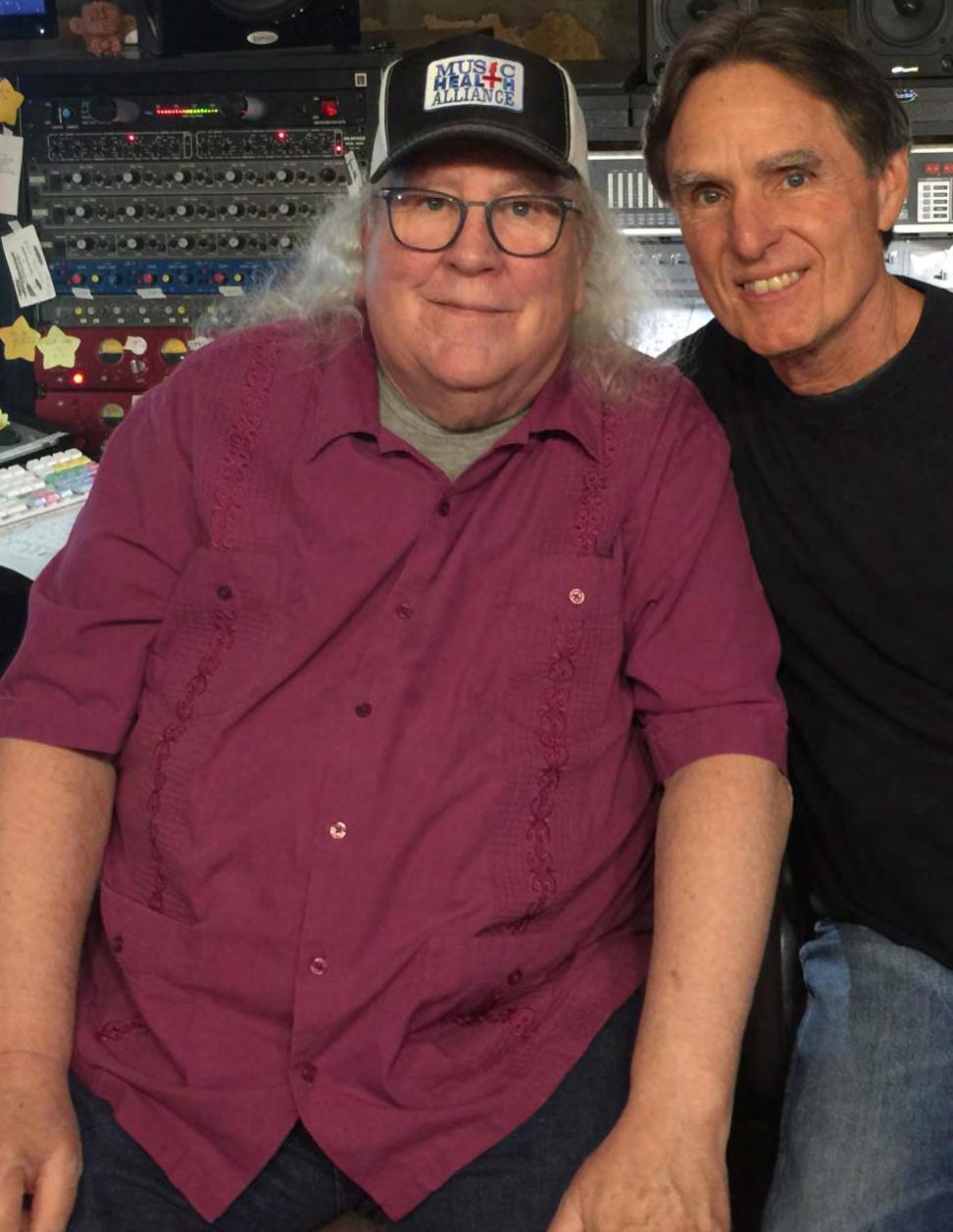
60
Prolific. Accomplished. Busy. None of these words fully relay the scope of what multi-instrumentalist Craig Duncan has done over the years. His output is so vast that it’s hard to find the phrases to describe it. Perhaps a summary is the best way to begin exploring a musician whose art seems to know few limits.
Duncan has artist or producer credits on a whopping 106 CDs and a lengthy list of publishing credits for writing books –and composing music – for Mel Bay Publications. He’s worked with many artists and within many genres, ranging from old-time to Celtic to…The Beatles.
Duncan is a North American Fiddler’s Hall of Fame member and winner of a 2018 Dove Award for “Instrumental Album of the Year.” Records he’s been a part of have sold upwards of five million copies, and his music has been heard on many television programs, including “Malcolm in the Middle,” “The Oprah Winfrey Show,” and more.
The list of artists Duncan has recorded music for is long and includes names such as Randy Travis, Billy Dean, Kathy Mattea, Charlie McCoy, and Roy Clark.

While fiddle is his primary focus, Duncan’s full roster includes hammer dulcimer, mandolin, guitar, bass guitar, autoharp, Irish banjo, and dulcimer.
Many of Duncan’s recordings
were created for the gift shop market, an interesting niche where he found solid footing.
“When I started playing hammer dulcimer, I talked with a friend, Jack Jezzro, who was producing recordings for a company that sold their products in vacation areas like the Smoky Mountains,” Duncan explained. “The gift shops in most areas sold music recordings featuring local music styles. Our first recording was a Christmas record using mountain instruments –hammer dulcimer, fiddle, guitar, mandolin, bass, and autoharp. This was followed by a hymn recording, and the ‘Smoky Mountain Hymns’ series took off.”
“This led to the opportunity to produce acoustic recordings for several companies in many different styles,” he added.
It seems like a long jump from hymns to The Beatles, but Duncan has made that leap and many more like it. He recently was part of a release that included songs by one of the most prominent groups in music history but created with instruments ordinarily heard in bluegrass. He said the unique record was very well received.
“When I make a recording with bluegrass instruments in a genre outside the typical bluegrass world, the goal is to make the recording in the style of the genre, not to make the genre sound like bluegrass,” he explained.
61
“So ‘Bluegrass Beatles’ should sound like Beatles music, ‘Bluegrass Swing’ should sound like big band, ‘Bluegrass Sinatra’ should sound like Sinatra music, including the way he phrases. ‘Bluegrass Homecoming’ should sound like Gaither Homecoming gospel, and ‘Bare Necessities’ should sound like Disney music.”
Whew…the scope of all that is dizzying to even consider!
Duncan is lucky; he says he enjoys many distinctive styles and gets the pleasure of eventually recording in most all of them.
“I listen to many styles of music, and particularly like roots music…music of the people,” he said. “This includes bluegrass, traditional country, Irish, Scottish, Celtic, western swing, cowboy, Cajun, blues, classical….”
He’s been at it for a long time. He started playing fiddle in his school orchestra in third grade, was in a boy’s choir from age eight to 12 and started out with electric bass at age 13.


“I’ve always loved music,” he said. “My first professional job was playing the fiddle at Carowinds Theme Park in Charlotte, North Carolina, when I was 19.”
Today, Duncan mainly records and performs at private events. A typical week is varied. On the day he told his story to The Bluegrass Standard, his calendar for the following week included “leading a French music band for a convention,” “playing fiddle with great local country artist Wendy Newcomer,” “playing a solo hammer dulcimer job, a Cajun duo with accordionist Jeff Taylor,” and “playing two bluegrass trio jobs with David Talbot on banjo and Mark Powelson on bass.”
“And” he added, as if that weren’t enough, “my dance band is
playing a wedding reception on Saturday.”
But even that’s still not enough…not
“Most Sunday mornings, you can find Faith Presbyterian Church in Goodlettsville, miles northeast of downtown Nashville,”
See? The word “prolific” barely scratches Those of us who aren’t music makers… teachers of music… sit back and watch does what he does, filling more and with sounds that soothe the soul.

62
Saturday.”
enough…not just yet. find me leading music at Goodlettsville, Tenn., just a few Nashville,” he added. scratches the surface. makers… songwriters…or watch in awe as Craig Duncan and more corners of the earth



63
Phillip Steinmetz & The Sunny Tennesseans
It may sound confusing, but Phillip Steinmetz’s greatuncle was Grandpa.
Grandpa Jones, that is, the beloved banjo-playing Country Music Hall of Fame member who earned widespread recognition as one of the cast members of the Hee Haw television series.
Now Steinmetz, fronting his band the Sunny Tennesseans, sings his great uncle’s songs and plays the banjo in the same rollicking style in appearances on stage across the nation.
“You could call our show old-timey,” Steinmetz says, explaining his many influences. “My show takes you back 50, 60 years ago to an Opry show where you would have somebody like
String Bean, and then you’d have the Carter Family come on. And then Sam and Kirk McGee would come on, and then Grandpa Jones would come on. It’s a variety show.
he’d come stay with us. And he and Ramona always played music while they were there. When I was little, he played ‘Froggy Went a Courtin’’ for me. And I asked him, ‘Would you teach me to play?’”
Our foundation is old-time mountain music, and that’s how we fit into a festival.”

Steinmetz grew up in rural Florida, and the opportunities to be around his famous great uncle and his wife, Ramona Jones, were special.
“If he had a show near us,
Grandpa sent Steinmetz a banjo in the mail and, on his next visit, showed him the right-hand clawhammer motion and told him to practice that. “Grandpa wouldn’t show me anything up on the neck. He said the next time we come, we’ll teach you some songs. And he said, ‘Sit there in class and thump on your knee under the desk, you know, thump, thump, thump, thump.’ And I can remember doing that just like it was yesterday.
“But the next time they

64
Brent Davis
came down, my cousin Mark (Grandpa Jones’s late son) took me out into their tour bus, and he taught me my first two songs: ‘Boil them Cabbage Down’ and ‘Cripple Creek.’ I learned both songs in two days.”
Though Steinmetz learned to play the banjo when he was about ten, Grandpa Jones was in his twenties and already on the music circuit before he took up the instrument. “There’s a lot of different ways to play clawhammer,” Steinmetz explains. “Grandpa would drop his thumb down and hit any other string he wanted, mainly the second string. This method came from Cousin Emmy--Cynthia May Harper. She was from Bowling Green, Kentucky. That’s who he learned from back in the mid-40s when
they were both on the radio in Wheeling, West Virginia.”
Growing up in the country, Steinmetz didn’t have anyone to play music with, but he listened to his father’s record collection and came to love and emulate the music of old-time artists such as Sam and Kirk McGee, The Carter Family and Uncle Dave Macon.

In addition to introducing him to traditional music, his father also introduced him to performing.
“As soon as I learned how to play around 10 or 11 years old, Dad got me on at the Central Florida Fair. In between acts, they’d get me up there to play for 15 minutes. I wore a big Stetson hat, and I sat on a stool, and I just put my head down
and played as fast as I could. I had a set list of about six songs. I figured if I play ‘em fast, I’ll get through ‘em sooner, and I can get off of here. So that was my first experience with being on stage. And I hated it.”
Fast forward several decades. Performing has grown on him. Now he’s on stage with The Sunny Tennesseans-the band he named for the introduction Grand Ole Opry host George Hay always gave Steinmetz’s favorite act: “And now Sam and Kirk McGee, the boys from Sunny Tennessee: Let her go, boys!”
“I didn’t count on it being probably the longest name in bluegrass: ‘Phillip Steinmetz and his Sunny Tennesseans.’ If you put that on the back of a festival t-shirt, it really stands out.”
The band also stands out because their old-time music is different from what other festival bands are playing.
“Some sound like Bill Monroe, some sound like Jim and Jesse, and some sound like Ralph Carter. It’s the same style. And no matter how good and how talented, the audience’s

65
ear gets burned out on that. And then here we come, and it’s so different that it’s kind of like a breath of fresh air that lets you reset yourself. We try to entertain people. I tell a lot of the old stories that Grandpa used to tell. He was an entertainer. He didn’t just get up there and play one song after another. He would make you laugh.

“I got to play with Grandpa on stage twice when I was 19 and 20. Both times Grandpa would come up in the middle of the second song I was playing, grab his band, and then we started picking together.”
In 2005 Steinmetz became a three-time Old Time Banjo National champion. Also, being named national champion in 2000 and performing as part of the Grand Ole Opry’s 75thanniversary celebration are special memories for him.

“Grandpa had passed away in 1998, and to play there just a couple of years later was bittersweet,” Steinmetz remembers. “I wished he had still been there. But that was a highlight that I’ll never forget. To help celebrate the Opry’s birthday is just something that not a lot of
people can say they’ve done.”
The Tri-State Bluegrass Festival in Kendallville, Indiana, runs Aug. 31 through Sept. 3. Also appearing along with Phillip Steinmetz and his Sunny Tennesseans are Cabbage Road Bluegrass, Lincoln Highway, Bluegrass Pythagoras, The Edgar Loudermilk Band, Sammy Adkins and Sandy Hook Mountain Boys, Tony and Blackwater, and Nu-Blu.
66





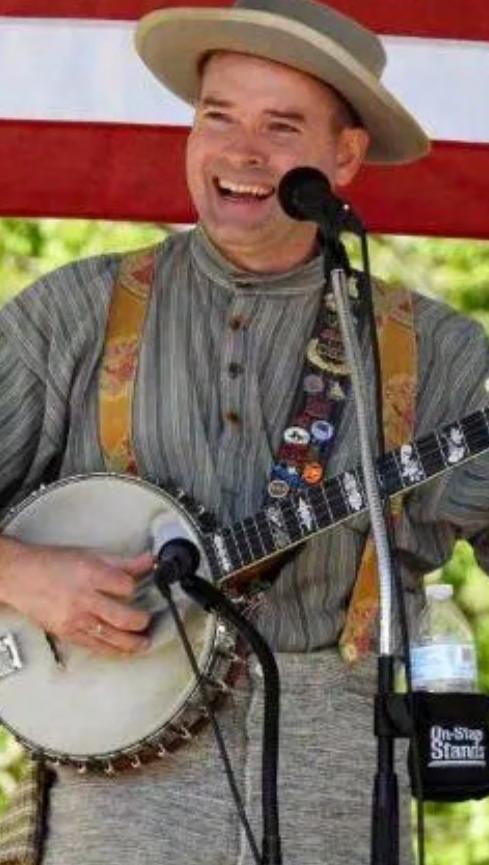
67


68
All Things Food with Appalachian Queen Dolly Parton
“I have always said my weakness is food, sex, and music… but not necessarily in that order,” Dolly Parton, patron saint of Appalachia, wrote in her book, Songteller.
The famous country singer-songwriter explores those themes in her songs, all while weaving in her experiences in Appalachia, growing up with 11 siblings in a one-room cabin.

“Coat of Many Colors” and “My Tennessee Mountain Home” are written about her childhood in rural Tennessee. “I think my voice is best suited for the old mountain style and the bluegrass. I guess it’s just ‘cause I feel that so much,” she has said.
Songs like “Jolene” and “Touch Your Woman” are sexy, intimate, and passionate. The latter was even banned from the radio for some time for being too explicit.
As for food, Parton sings about eating a stale sweet roll in “Down on Music Row” and wrote “Two Doors Down” about fried clams. She has said she likely enjoyed comforting food like mashed potatoes or mac & cheese after writing two of her biggest hits, “Jolene” and “I Will Always Love You,” back-to-back.
Parton, an actress, philanthropist, and businesswoman, wrote a few cookbooks, one of which is called “Dolly’s Dixie Fixin’s: Love, Laughter, and Lots of Good Food.” The book features her personal collection of southern recipes, including her famous banana pudding, which is even used in her theme park, Dollywood, in Pigeon Forge, Tennessee. Many of the book’s recipes were passed down to Parton from her mother and mother-in-law. It also includes recipes for dishes from some of her favorite restaurants she has discovered while traveling the world performing.
One of the recipes in her book is “Chicken and Dumplins,” which she proclaims to be her favorite Sunday supper. There are recipes for fried green tomatoes, gristmill cinnamon bread, walnut pie and more.
“I still like to try new foods as often as I can. But when it comes to cooking for myself and my husband Carl and my great big extended family, which numbers into the multiple hundreds these days, what we really want to eat is what comforts us most: good, hearty food rooted in Mama’s cooking and those country gatherings of my childhood. It’s the food from those Mom and Pop joints that welcome you in as if you’re
Candace Nelson 69
family. We really just want food that is lovingly made and joyfully served up. Around here, that’s what we call Dixie Fixin’s,” she wrote in her cookbook.

She has also partnered with Duncan Hines to bring some of her recipes from the cookbook into our home kitchens. The dynamic duo has released a collection of cake mixes, frostings, and, most recently, savory mixes inspired by her favorite southern recipes:

Sweet Cornbread & Muffin Mix: Moist and buttery, this features Dolly’s favorite recipe for Jalapeño Cornbread right on the packaging.
Buttermilk Biscuit Mix: Made with real buttermilk, this mix features one of Dolly’s favorite recipes for Cheddar and Chive Biscuits on the box.
• Caramel Turtle Brownie Mix: A sweet way to level up Dolly’s famously delicious dessert, with an on-pack recipe for Dolly’s favorite Peanut Butter Brownie Skillet Sundae.
• Fabulously Fudgy Brownie Mix: Perfectly chewy and chocolatey, the box features a recipe for Dolly’s favorite Pecan Brownies.
• Southern Style Banana Flavored Cake Mix: This mix can be used for a decadent banana dessert. Her Southern Style Banana Cake Recipe is on the box.
• Southern Style Coconut Flavored Cake Mix: Dolly’s Southern Style Coconut Cake Recipe is on the box, which pairs well with...
• Creamy Buttercream Flavored Frosting: Dolly Parton’s Favorite Creamy Buttercream Flavored Cake Frosting adds a creamy touch to treats.
70




71
• Creamy Chocolate Buttercream Flavored Frosting: Chocolate Buttercream Flavored Cake Frosting sweetens up creations.
The queen of Appalachia has a decades-long career spanning various industries and subjects, yet she has remained relatable and down-to-earth despite her rise to fame.

She often speaks to the disenfranchised through her work and brings people from all walks of life together. Food is just one more vehicle Parton has used to connect to her communities - whether through personal recipes or sharing culinary foundations for people to put their spin on.
This, among many other reasons, is why Dolly Parton is more than just a cultural icon to Appalachia - she is an authentic, deep-rooted queen who proudly represents the region.
Dolly Parton’s Banana Pudding Recipe
Ingredients:
• 3 eggs, separated
• 1 cup sugar
• 1⁄2 cup all-purpose flour
• 2 cups milk
• Dash of salt

• 4 tablespoons (1⁄2 stick) butter
• 2 teaspoons vanilla extract
• 1 (12-ounce) box of vanilla wafers
• 5-6 bananas, sliced
Directions:
1. Preheat the oven to 350 °F.
2. Lightly beat the egg yolks. Combine 3⁄4 cup of sugar and the flour in a medium pot. Gradually stir in the milk, followed by the egg yolks and salt. Cook over medium heat 15 to 20 minutes, stirring constantly, until thickened. Remove the pot from the heat and add the butter and 1 teaspoon of vanilla. Set aside to cool slightly. Arrange half of the wafers on the bottom of a 2-quart baking dish. Top with half of the banana slices. Spoon half of the pudding mixture over the bananas. Repeat with remaining wafers, bananas, and pudding.
3. In a clean bowl, beat the egg whites with the
remaining 1⁄4 cup of sugar and 1 teaspoon of vanilla until they form stiff peaks. Spread with a rubber spatula over the pudding, sealing the edges. Bake until the topping is light golden, 15 to 20 minutes. Remove from the oven and let cool. Serve cooled.
72
FAN PHOTOS









73

74



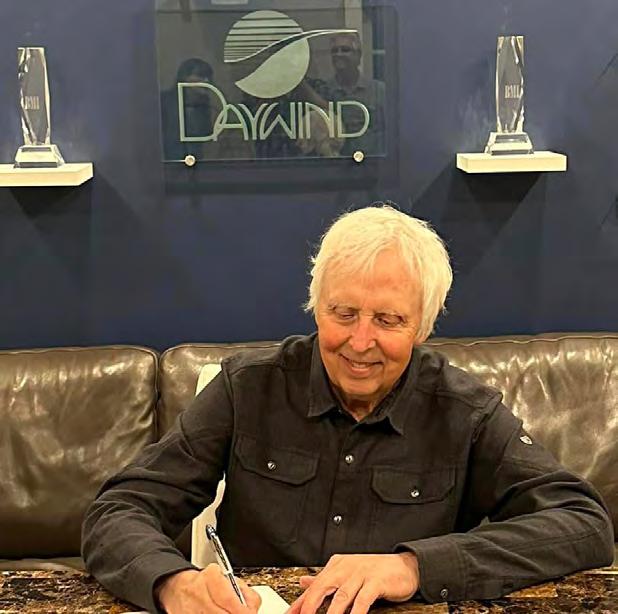

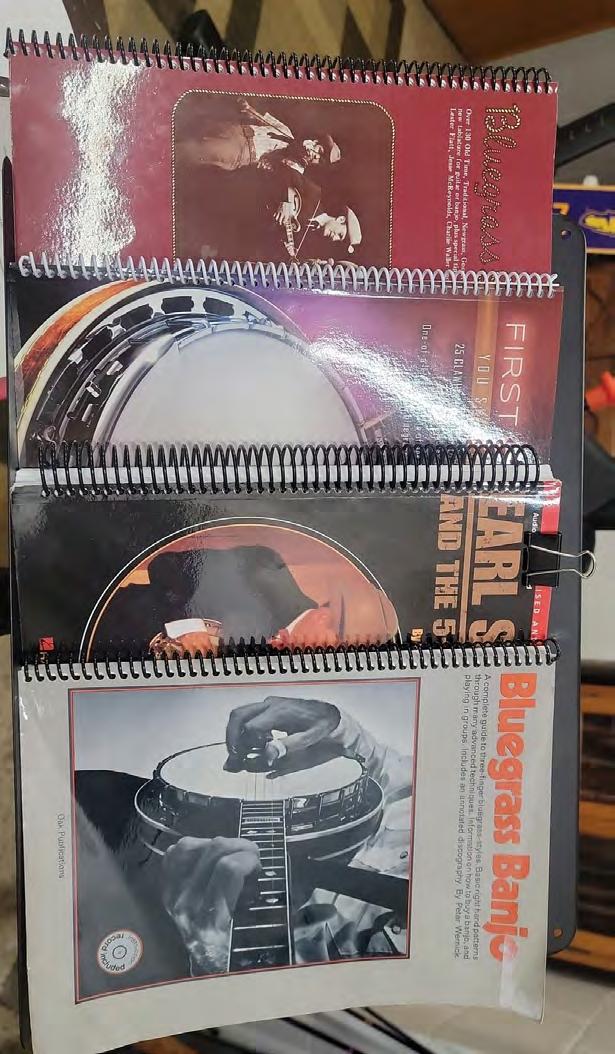


Day 75
Thank you to our Photo Contributors: Robin Frenette Bob Free Sandra “Sparky”








76
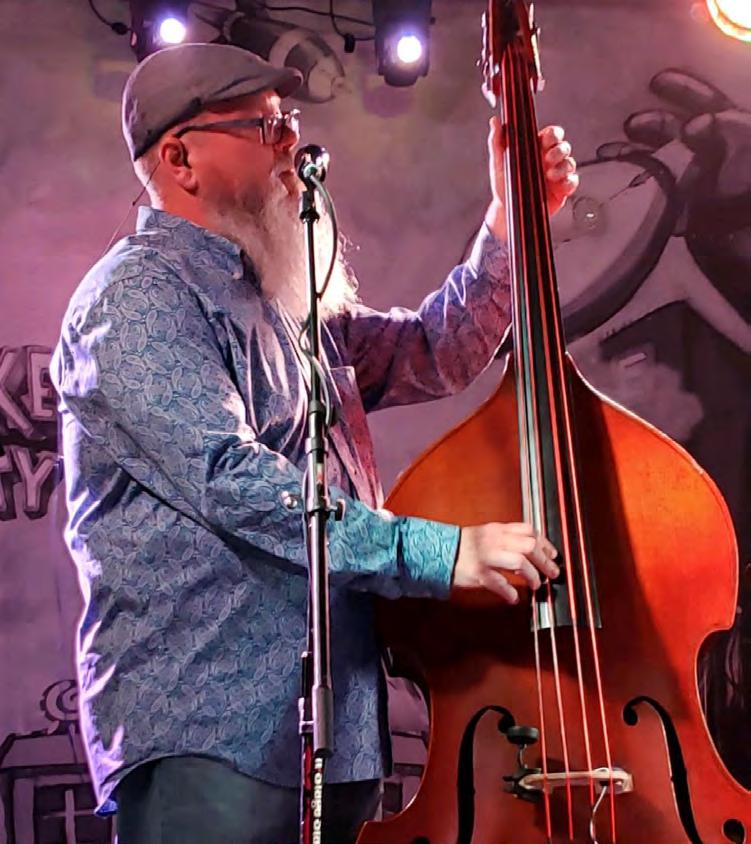





77

78









































































































































































